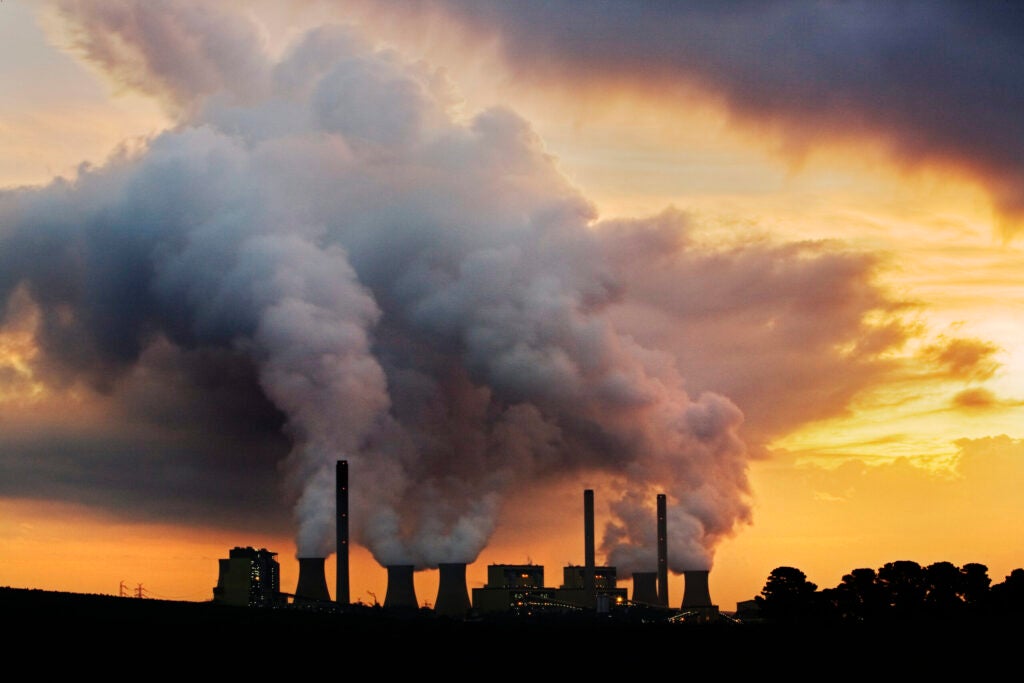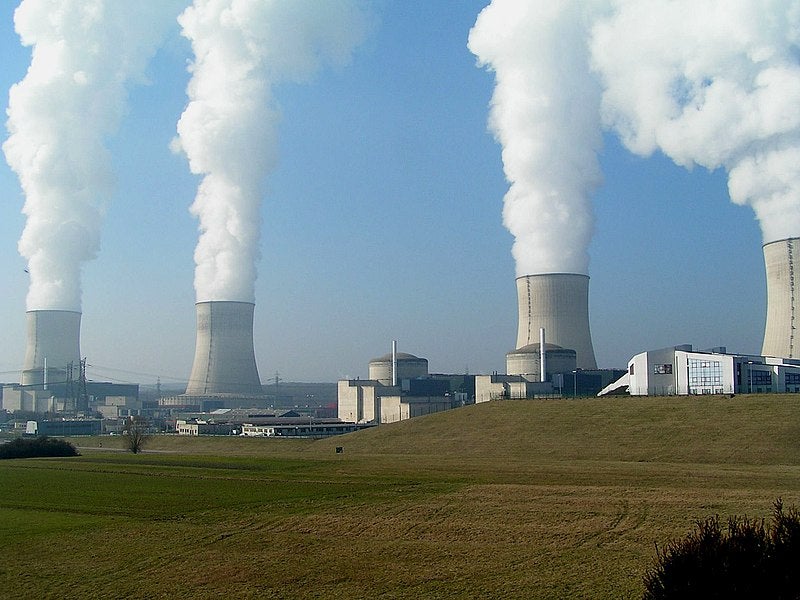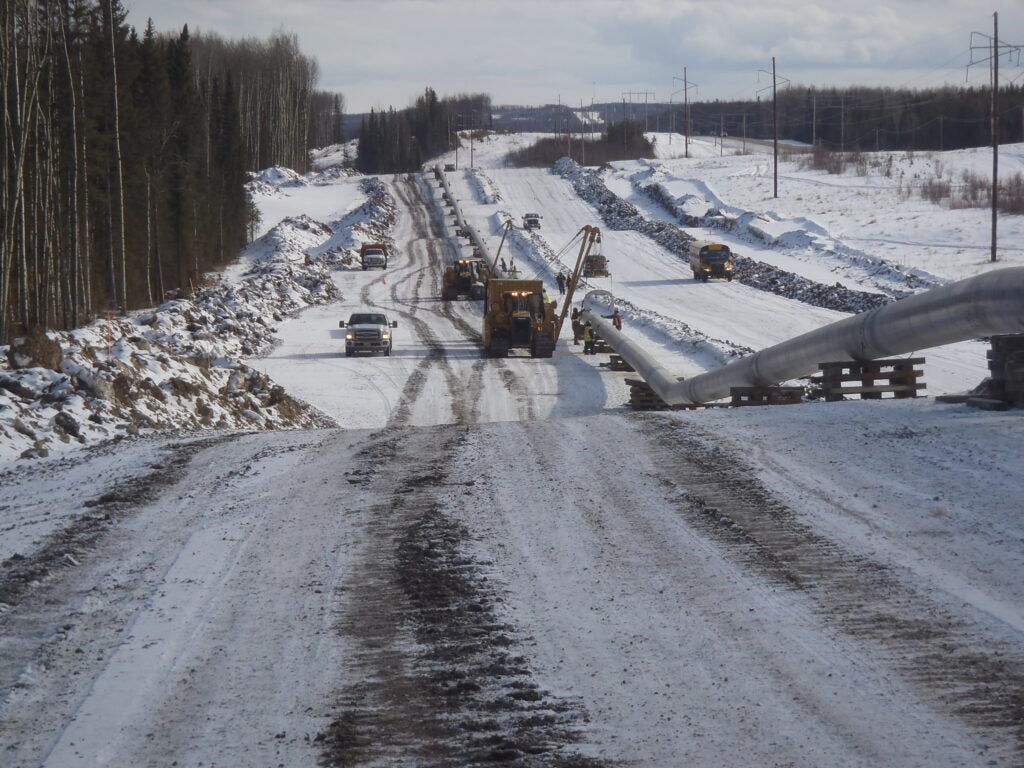A report by the Intergovernmental Panel on Climate Change (IPCC) has spelled out how global warming and climate change will affect power generation over the next 80 years.
The report gives the clearest outline yet of potential risks to humans as a result of global warming. Starting in 2017, 270 authors from 62 countries collaborated to write about the practical impacts of climate change. Since 2019, the group has incorporated more than 62,000 comments from academics and governments in the 3,675-page analysis.

Discover B2B Marketing That Performs
Combine business intelligence and editorial excellence to reach engaged professionals across 36 leading media platforms.
The first IPCC report, published in August 2021, showed the increased risk and severity of extreme weather as global warming advances. This publication spells out the effects that years of pollution will have on humans, while leaving out specific action recommendations. In April 2022, IPCC Working Group III will publish its report into methods of carbon mitigation and carbon removal.
While the current report gives many insights on consequences for humanity and other species, it also gives an idea of some of the changes that society and business will need to make to keep the planet inhabitable.

Water, hydro and worsening cooling on a hot planet
One of the key risks identified comes from changes to water availability as the Earth heats up. The report repeatedly states that a general decrease in water availability would drastically decrease hydroelectric power generation. Citing a paper from Nature, the authors expect global hydroelectric capacity to fall by 0.4–6.1%.
This paper concludes: “We show reductions in usable capacity for 61–74% of hydropower plants and 81–86% of the thermoelectric power plants worldwide between 2040 and 2069.” In Brazil, this would effectively result in an end to viable hydroelectric generation before 2050.

US Tariffs are shifting - will you react or anticipate?
Don’t let policy changes catch you off guard. Stay proactive with real-time data and expert analysis.
By GlobalDataA loss of cooling water would not affect areas equally, with India and Russia expected to increase their annual thermal power plant capacity. Overall, however, this capacity would fall by at least 7% globally by the middle of the century. The report’s authors add that “some power generation technologies, including carbon capture and storage, would require as much as six times the current cooling water demand”.
Even in Paris-aligned emissions scenarios, areas reliant on water from melting snow will see up to 20% less water after 2050. This would significantly impact hydroelectric power generation in mountainous countries such as Norway, which relies on hydro for 92% of its power.
Lower meltwater flows would also affect water-intensive mining, such as for lithium from South America. Chile hosts the world’s fourth-largest lithium producer, which relies on water-intensive brine extraction in the Atacama Desert.
Most water in this area comes from the Andes, but a decrease in meltwater would increase the cost of operations. This would likely push up lithium prices, which many already expect to rise as increase in demand outstrips increase in supply. Many renewable technologies would also increase in cost, because of their reliance on lithium.
The report states that adaptation of hydro and thermal power sources remains effective up to 2°C, though effectiveness decreases thereafter: “Risks in physical water availability and water-related hazards will continue to increase by the mid- to long-term in all assessed regions, with greater risk at higher global warming levels.”
The authors also warn of “increasing transboundary risks across the energy sector”, with high confidence.
Renewables and the imbalance of global warming
With every extra 1°C of heat in cooling water, electricity yield decreases by approximately 0.12%–0.7%. While small, this would affect all methods of thermal power generation, including nuclear and biomass.

(Photo by Stefan Kühn/Wikimedia)
Higher global temperatures will increase the effectiveness of thermal plants but decrease the efficiency of photovoltaic solar panels. Increases of dust and sand in the wind would also increase the need for panel cleaning. These effects would not spread equally, but one paper suggests a global decrease in solar power effectiveness of 1% per decade between 2005 and 2049.
“However, positive trends are projected in large parts of Europe, south-east North America, and the south-east of China,” states the report.
It highlights “infrastructure resilience, reliable power systems, and efficient water use” as the best adaptations to a warming climate, with very high confidence. Diversifying generation via greater decentralisation and demand-side power management would increase system versatility, especially in rural areas.
“Climate responsive energy markets, updated design standards on energy assets according to current and projected climate change, smart-grid technologies, robust transmission systems, and improved capacity to respond to supply deficits have high feasibility in the medium- to long-term.”
Shifting infrastructure as global warming thaws permafrost
Although water scarcity will affect many operations, the group stated with medium confidence that “projected increases in direct flood damages are higher by 1.4 to 2 times at 2°C, and 2.5 to 3.9 times at 3°C, compared to 1.5°C global warming without adaptation”.
The authors expect that, across all sectors and areas, weather impacts on power generation will worsen. In currently cold areas, these effects could be more pronounced.
“Functional disruptions [associated with global warming] are projected to be substantial, particularly for infrastructure located on permafrost in cold regions and on coasts.” This would particularly affect oil and gas drilling in northern Canada, Siberian Russia and the US state of Alaska.
While Canada has seen some decline in high-Arctic drilling, Russia has moved to expand its oil and gas industry in the tundra. However, melting permafrost and resulting geological instability would disrupt development in the area. One cited paper expects instability to cost Alaskan oil and gas producers up to $33m in pipeline damages by 2100. Increased expansion in the metals of pipelines could also disrupt continuity in energy flows.

Similarly, structural damage to power transmission systems will increase in areas expecting more wintery weather in future. This includes most of Canada and Japan, while the US will experience more damage from wildfires. Damage from strengthening winds is said to be “limited” in most places, although Russia could see reliability fall by up to 30%.
Risks from an interconnected economy
Much of the report focuses on the increasing costs and problems for agriculture, which would result in higher food prices. The report also states with “high confidence” that “climate change and related extreme events will significantly increase ill health and premature deaths from the near- to long-term”.
Mitigating some climate impacts will mean changing building standards and redesigning cities to better incorporate nature itself. This would increase the cost to businesses in the near term but may decrease it in the long term. Overall economic damage is expected to “increase non-linearly” with global warming levels, more so than in previous estimates.
[Keep up with Energy Monitor: Subscribe to our weekly newsletter]
The interlinking of the global economy means that impacts on other sectors would result in disruption costs within power generation.
“For example, in the EU, the expected annual damages to energy infrastructure, currently €500m [$560m] per year, are projected to increase 1,612% by the 2080s,” the report states.
“In China, 33.9% of the population are vulnerable to electricity supply disruptions from a flood or drought, whilst in the US, higher temperatures are projected to increase power system costs by about $50bn by the year 2050.”
Many of these wider impacts will also alter the socio-economic system where businesses compete. The report’s authors expect scarcity to drive conflict and, separately, mass migration, affecting when and where businesses can develop.
“Out atmosphere is on steroids”
The report also warns against “maladaption”, where organisations attempt to adapt to climate risk in ways that either worsen climate disaster or cannot deal with increasing levels of global warming.
“Poorly implemented bioenergy, with or without carbon capture and storage, can compound climate-related risks to biodiversity, water and food security, and livelihoods, especially if implemented at large scales, especially in regions with insecure land tenure,” it states.
One example of this comes from existing systems for carbon offsetting. Currently, carbon-intensive businesses can balance their pollution with carbon credits or offsetting measures, such as tree planting. However, the report warns that as global temperatures increase, carbon offsetting methods become increasingly ineffective.
Businesses seeking to insulate themselves from climate risk can unknowingly increase their exposure to it via maladaption. As an example, the paper warns against including fire suppression in naturally fire-adapted ecosystems, or building hard defences against flooding where natural defences could absorb extreme events.
At a press conference accompanying the release of the report, World Meteorological Organisation secretary general Petteri Taalas warned that only half of the 193 members of his organisation have capable weather forecasting services. He continued: “The current negative trend in weather events will continue for decades. Our atmosphere is on steroids, doped by fossil fuels.”
At the same time, UN Secretary General Antonio Guterres gave an address declaring that fossil fuels “had reached a dead end”. He continued: “Adaptation and mitigation must be pursued with equal urgency. The commitments made in Glasgow are not enough.
“I know people are angry, and now is the time to turn this anger into action. All development banks know what needs to be done. All governments must comply with the Glasgow Climate Pact.”
The co-chairs of IPCC Working Group II also answered questions at the report’s launch. Hans-Otto Pörtner, co-chair of IPCC Working Group II, told the press: “I don’t think this report gives reason for a sense of gloom and foreboding. Our option and choices for a more equitable, sustainable world are clear. All that waits is for us to just do it.”
Editor’s note: This article was originally published on our sister site Power Technology. For more on what the IPCC’s latest report means for businesses, read this accompanying article by Energy Monitor correspondent Oliver Gordon.





